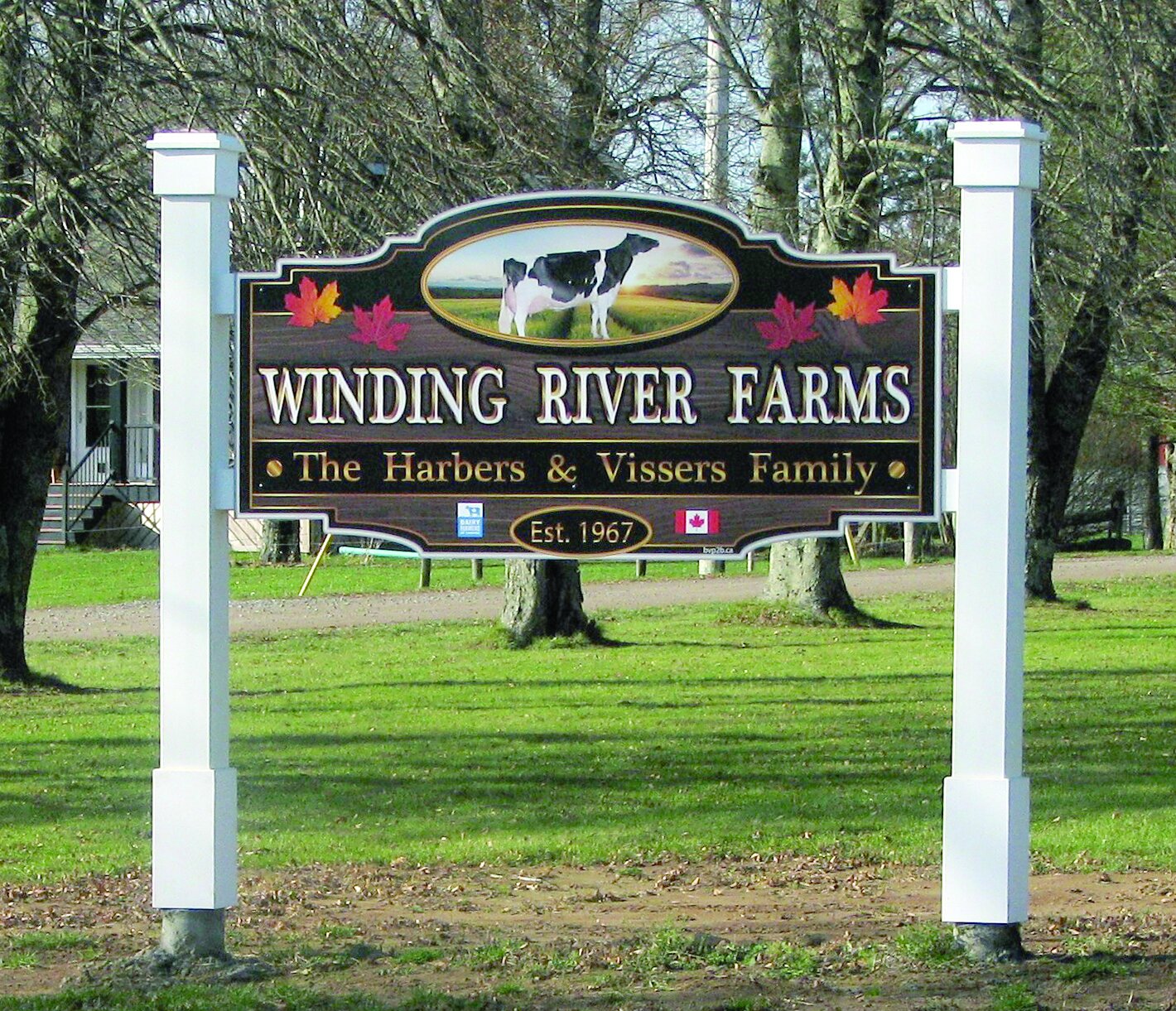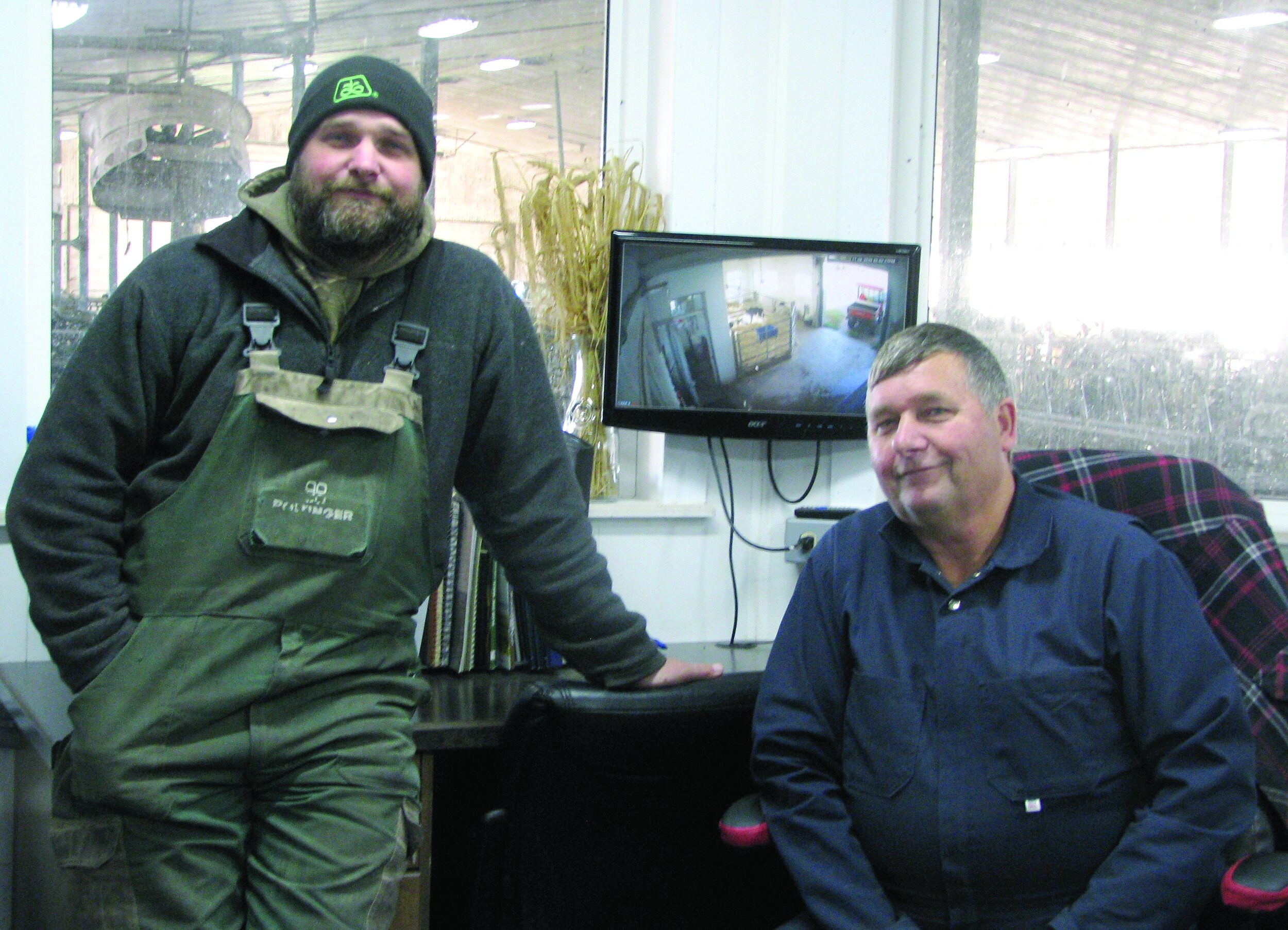N.S. dairy farmers still growing after more than 50 years
/by Dan Woolley
John Vissers has experienced an eventful 53 years since his family migrated from Aylmer, Ont., to a dairy farm outside of Stewiacke, N.S.
His father Lambertus (Bert) – who died in 2015 at the age of 93 – bought the property, now known as Winding River Farms, on the Alton Road in 1967. That was one year after John’s uncle Peter led the way to Nova Scotia with his purchase of a farm in nearby Shubenacadie.
After immigrating to Canada from Holland in 1954, John’s parents operated a grocery store, a cold storage facility, and a dairy and tobacco farm in southern Ontario.
Once settled in Nova Scotia, in 1968, John’s father converted their farm’s 40-cow tie-stall barn to a free-stall operation and added a milking parlour.
In the early years, the challenge was to grow the farm by clearing a lot of woodland to open fields for forage crops and pastures, not to mention building construction. “Every year, we added a new piece on the barn or built a new barn,” said John.
In the early 1970s, they had to rent a barn for their heifers following a barn fire. But they then built a pole barn and rehoused their heifers there in 1973.
CORN SILAGE
One of the other early innovations Bert tried out was growing corn for silage. “There was very little grown at that time,” said John, explaining that the available varieties in those days were a challenge to grow in this region.
Since then, he noted, corn varieties have come a long way and varieties are being bred for Atlantic Canada that require 2,200-2,300 corn heat units.
His father’s focus was on increasing his milk quota base, which meant an emphasis on growing enough feed for the farm’s dairy herd.
When John and his brother-in-law Eli Harbers took over the farm in 1983, John said “our focus was more land improvement through tiling and land clearing and a lot of stone picking to get our land base built properly.”
He said the land improvement reduced their need to buy extra feed.
COW COMFORT
Regarding herd management, John said their end goal is to minimize labour while improving cow comfort and longevity.
Their current milking herd housing was designed with those three objectives in mind and some cows in the herd have ear tags indicating they’ve been through eight to nine lactations. “Years ago, you were lucky to average three lactations because the old barns were hard on cows,” said John. “There were more chances of them being injured.”
In 2014, they moved their milking herd into new housing, expanded from a heifer barn they built in 2003. The building is now more than 400 feet long and covers 40,000 square feet with a drive-through alley down the centre.
John said that milking robots in the expanded barn have also improved the on-farm lifestyle by minimizing the labour to milk cows. That frees up time for more efficient fieldwork and cropping.
The milking herd housing is also fitted with headlocks, which makes it easier to handle the cows.
FARM TRANSFER
In 2012-2013, Winding River Farms underwent an intergenerational transfer, with John’s son Chris and Eli’s son Bert assuming the farm’s management. “So, they are the new bosses,” said John. “The only difference is instead of me telling them what to do, they tell me. Eli and I are now semi-retired.”
John said the family worked with a couple of consultants for a few years before the transition.
“We had our accountant and lawyer do most of the planning,” he said. “We had to figure out what was doable, and we had to provide for our retirement, and the farm still has to function. We kept our equity in the farm, paying it out gradually over 30 years.”
He said that approach should enable the farm to modernize in the ways it will need to be successful in future years.
John said the big infrastructure expansion to 40,000 square feet happened after the intergenerational transfer because the old milking herd barn needed to be replaced and the modernization met the needs of himself, Eli, Chris, and Bert. The old barn now houses dry cows and heifers, and the old milking parlour has been converted into a calf feeding facility.
There are some 320 head in the Winding River Farms herd. They’re milking 170 cows, 40 of which are first lactation milkers.
The farm has three milking robots, one of which is reserved for the first lactation cows. John said the milking herd averages 41 litres per day.
MORE EFFICIENT
“Everything we do is to make us more efficient,” said Chris.
Besides the expanded barn for the milking cows, John noted that other recent infrastructure improvements include new storage bins for grain, soybeans, and canola, which gives them more flexibility in cropping management.
“We are farming just under 900 acres, owned and rented,” said Chris, adding that they grow native grasses, clover, alfalfa, corn, soybeans, canola, and Winter wheat. They sell surplus corn, soybeans, and Winter wheat to other farmers.
Winter wheat is ideal as a cover crop on fields with erosion problems.
As for the farm’s machine and vehicle fleet, John said they try and keep it to “a reasonable number.”
They hire a custom contractor for combining.
“We have our own self-propelled machine for corn and forage harvesting, plus we do some custom work for corn harvesting in the fall,” said John.
TIGHT MARGINS
They would rather buy replacement parts than new equipment.
“We have replaced the coulters several times on our old disc,” said John. “The price of equipment these days scares growers. You don’t buy anything for under $40,000.”
His son agreed.
“Our margin is getting tighter every year,” said Chris. “Costs are creeping up and there is not any more money for what you are doing. Once you have paid for your barn, there isn’t much left over. You can’t stop spending money. If you go through a year without spending money, you only increase your future expenses.”
John added, “We always try to find ways to increase our efficiency.”
As for field inputs, Chris said, “We spread liquid and solid dairy manure, but we have also used some chemical fertilizers. We have also used chicken manure when it is available and some amendments of wood ash, lime, Enrich (amendment), and compost from a landfill.”
John noted that Winding River Farms won Nova Scotia’s Farm Environmental Stewardship Award in 2015. “We are always conscious of keeping the fields sustainable over the years,” he said. “Our goal is to always keep our land base so it stays productive.”
They also maintain riparian buffer strips around the banks of the Musquodoboit River and McNutt Brook, which flow through their farm’s pastures and fields, to protect Wood turtle habitat.










